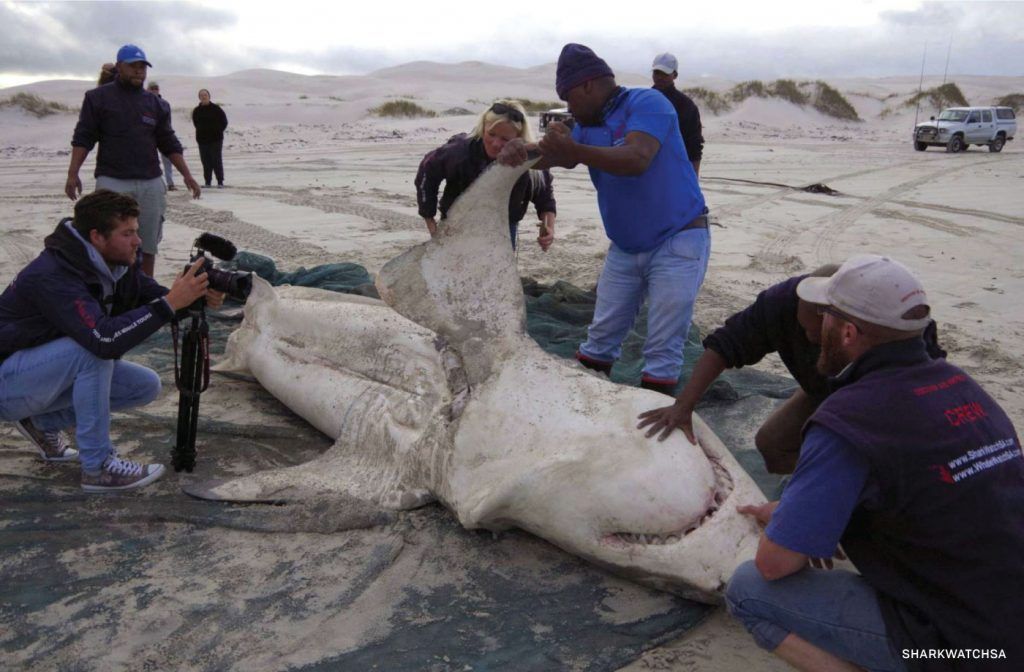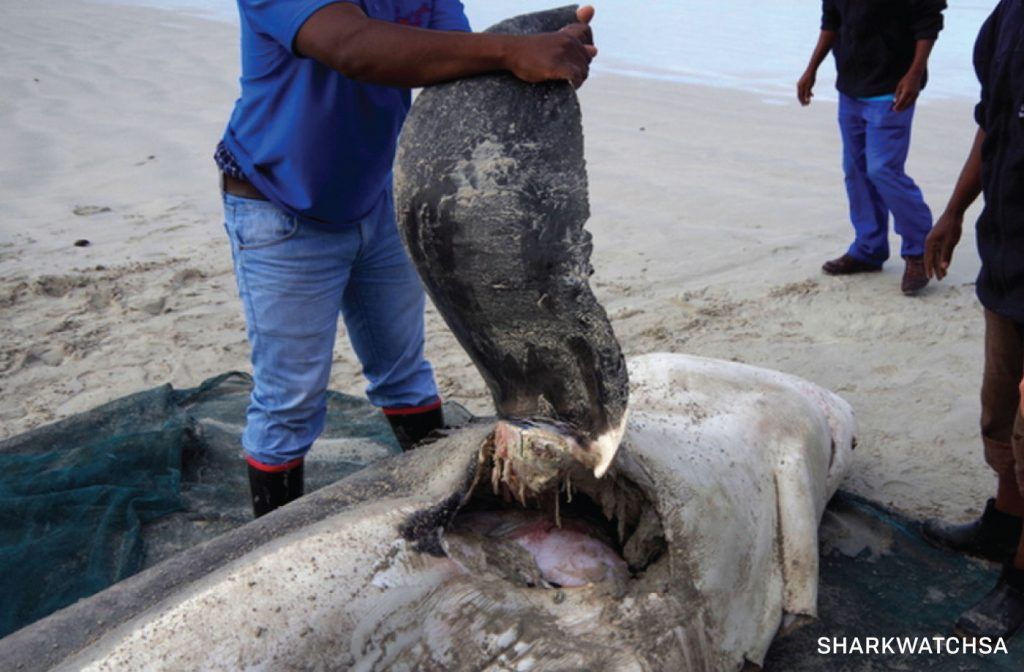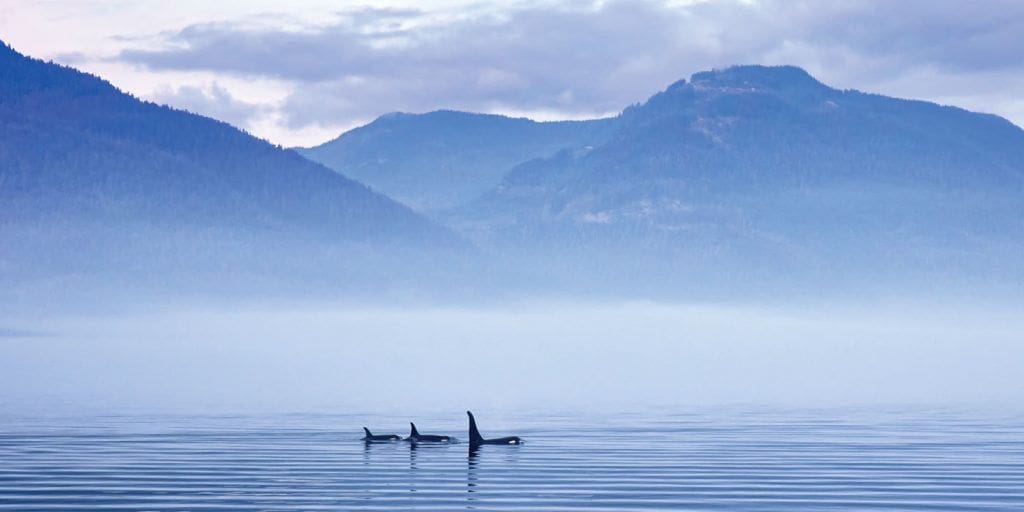Surgeons of the Sea
Free Willy vs Jaws… who wins? Hollywood has altered our expectations about how this sort of apex predator duel would go down. Unless you spend more time watching documentaries than old movies on VHS, then the answer isn’t so clear.
The biggest great white sharks can measure six metres long, weigh more than 2200 kilograms and have a biting power of 1800 kilograms per square inch.
The biggest orca, on the other hand, was measured at 9.75 metres and weighed 10,000 kilograms. Perhaps most importantly, orcas are smart. Real smart.
Let’s just say, if Willy surgically removed Jesse’s liver, then the movie probably wouldn’t have been such a family-friendly classic.

Early in May 2017, on the coast of South Africa, a 4.9-metre female great white shark washed up in Gansbaai, a fishing town at the very bottom of Africa. A team of experts went to dissect the shark, the largest to wash up since 2012.
“We estimated her weight at 1110 kilograms,” says Alison Towner, white shark biologist for the Dyer Island Conservation Trust on the Sharkwatch SA Blog. “Again there is much speculation flying around about orcas killing the shark. There is a gaping wound on the shark’s underside, but until we have examined the injuries closely, we cannot confirm if her death is indeed orca-related or not.”
It’s only the fifth shark carcass ever to be reported washing up in the area. But shortly after, the team received reports of two more carcasses washing up, although they were unable to locate them. They weren’t to be left waiting for long. The next day they got a callout and retrieved a 3.4-metre male missing big pieces out of each flank. While the body was degraded to a point where many of the measurements they’d normally make during an autopsy were impossible to do, the team was able to ascertain that it was missing its entire liver and heart.
Another two days later and another great white has washed up an hour’s drive east at Struisbaai. These sightings are coming a little too often now. This time it’s a 4.2-metre male, and his wounds match those of the last two that washed up.

“It seems likely that orcas are again the cause of death, but we will confirm after the autopsy,” Alison Towner says. “Obviously this is a very sad time for us all; nature can be so cruel and the dexterity these enormous animals are capable of is mind blowing, [there is]almost surgical precision as they remove the squalene-rich liver of the white sharks and dump their carcasses.”
With support from Marine Dynamics biologist, Kelly Baker, Towner performed her third and hopefully the last autopsy in a week. The shark’s liver had in fact been removed, however, unlike the first two carcasses, his heart remained. This is the first evidence of orca predation observed in South Africa. The team concluded that all three had been killed by orca by the removal of their livers.
“These observations are unprecedented,” Towner says.
While this number of kills may be unprecedented in South Africa, when we first wrote about the story on Facebook, readers told us it wasn’t unusual at all, for example, “Blokes on trawlers will tell you how they catch shark with the liver removed like a surgeon had done it.”

In 1997, whale watchers were treated to quite a sight when an Orca rose to the surface with a 3.5-metre great white clutched in its mouth. Orcas have a particularly dirty trick for taking down great whites with little danger to themselves: sharks are required to move around to be able to breath. Simply hold the bastard still and upside down, inducing ‘tonic immobility’, which means the shark is conscious but unable to move. This state can be induced in other animals as well, and possibly even in humans, in high-stress situations when freezing seems like the best course of action.
Then, after the orca has done that, it floats around for 15 minutes or so until the shark has drowned. The orca is then joined by another pod member, who helps remove the liver, eats it and then let the corpse sink.
It seems relatively easy for the orca to remove the liver. Puncture a decent hole in the pectoral fins of the shark, flip it over and then the fatty liver is buoyant enough to separate itself from its recently deceased home and float to the surface, ready to be gobbled up.
Orcas are apex predators, and have their pick of seafood, eating everything from gulls to turtles. They tend to specialise in different foods from pod to pod, however. In fact, it’s got to the point that scientists are starting to wonder whether they need to break orcas down into more nuanced subspecies due to this variety of specialisation. “The taxonomy of this genus is clearly in need of review, and it is likely that O.orca will be split into a number of different species, or at least subspecies, over the next few years,” according to the IUCN report 2008.
In New Zealand, orcas have been spotted forcing smaller sharks to the surface using vortexes created by their tails, and they often use their tonic immobility move on local stingrays.
As for humans, we don’t have much to worry about. Our liver is usually full of alcohol and doesn’t have the delicious amounts of iron that great whites have. Apart from the attacks at Sea World, as documented in Black Fish, humans haven’t been on the platter for orcas. Only one well-documented case of an orca bite exists, from 1972 ,when Californian surfer Hans Kretschmer got up close and personal. His run-in rewarded him with 100 stitches.
In 2010, neuroscientist Lori Marino and her team of researchers did MRI scans on the brain of a dead orca and found it had massive potential for intelligence. With the second-biggest brain in the ocean, it’s good to know it’s using it for something.
This finding was overshadowed at the time by one of the attacks talked about in Black Fish. People weren’t interested in knowing how Orca share cultural behaviours that persist over generations, they just wanted to know if they were conscious enough to kill a precious human life.
Marino’s conclusion was: “if we are talking about whether killer whales have the wherewithal and the cognitive capacity to intentionally strike out at someone, or to be angry, or to really know what they are doing, I would have to say the answer is yes.”

